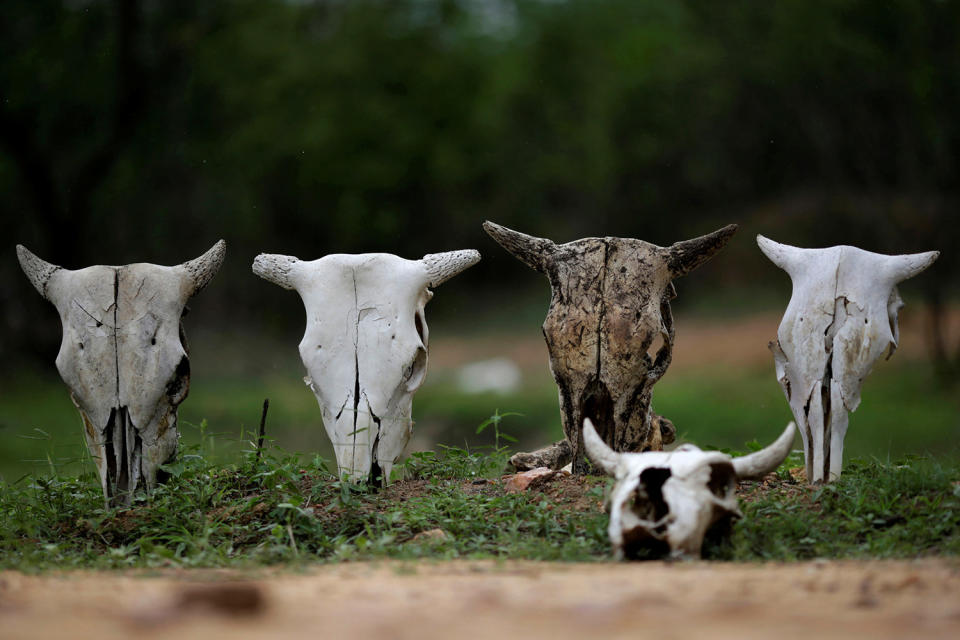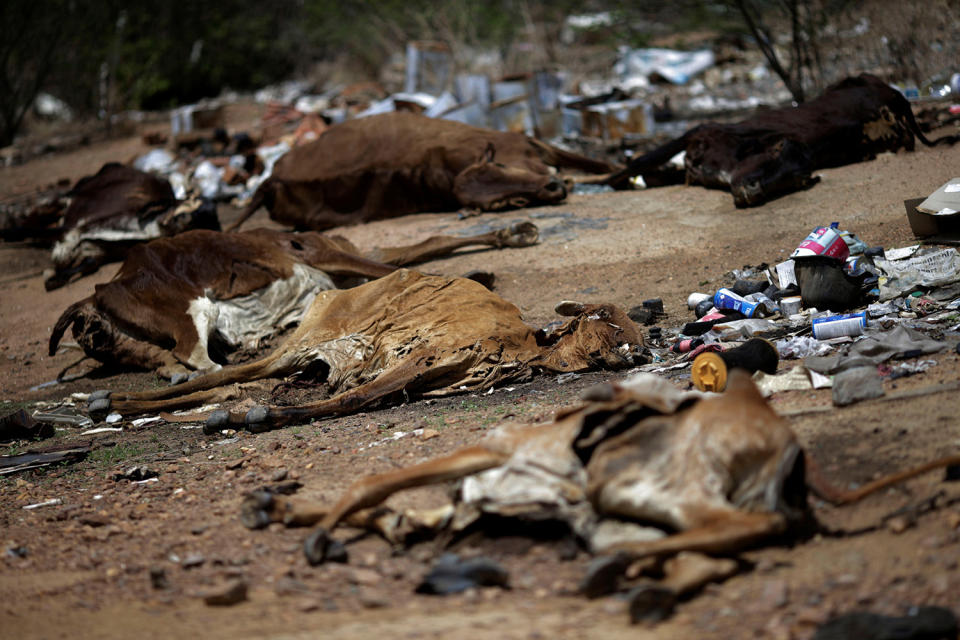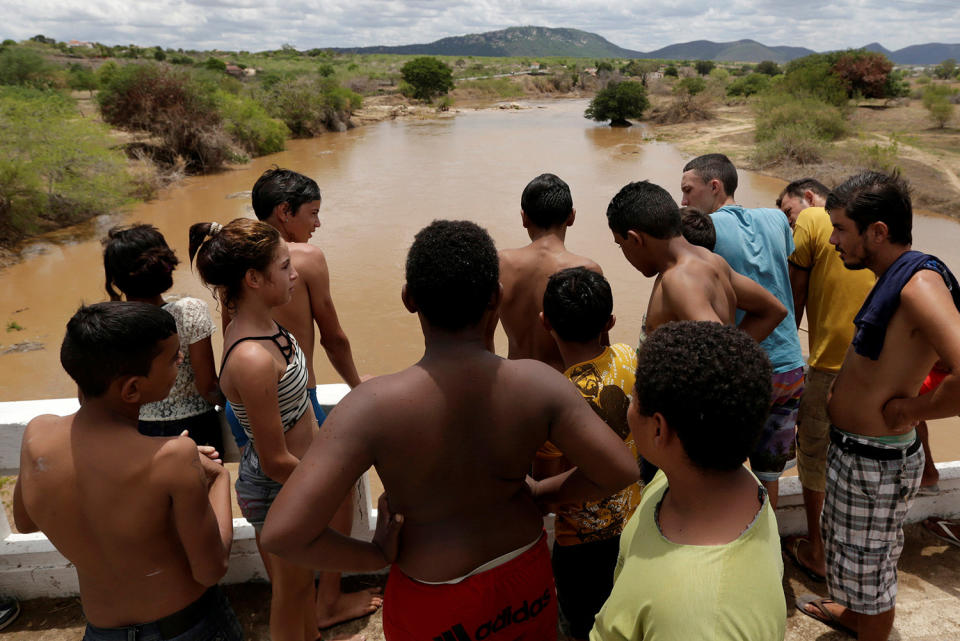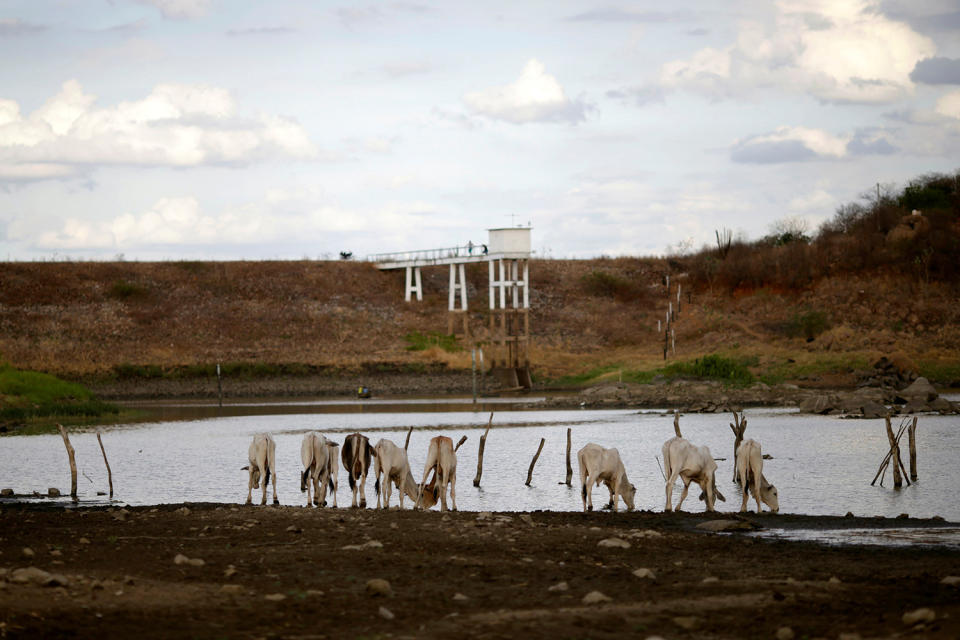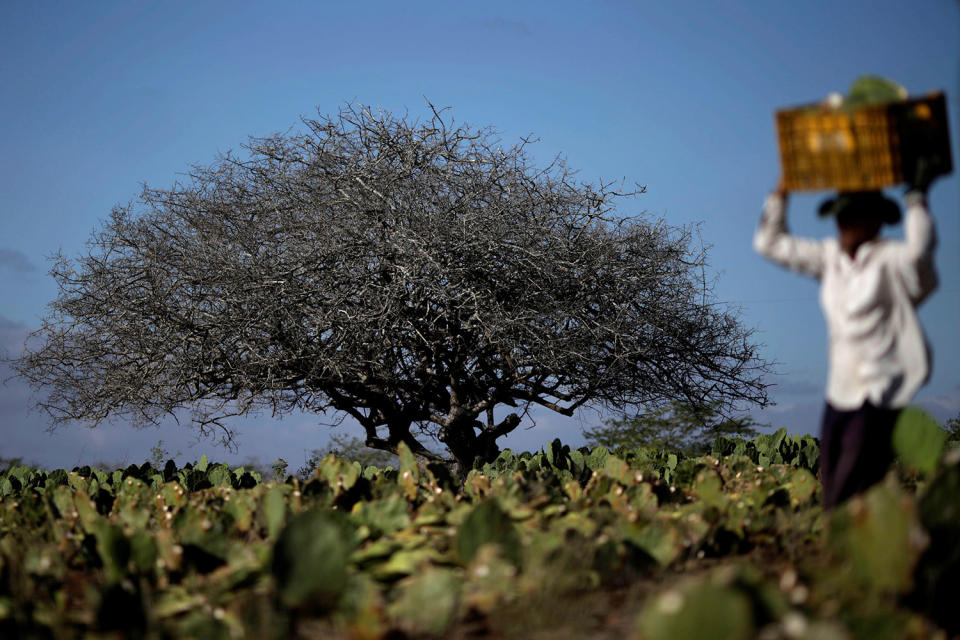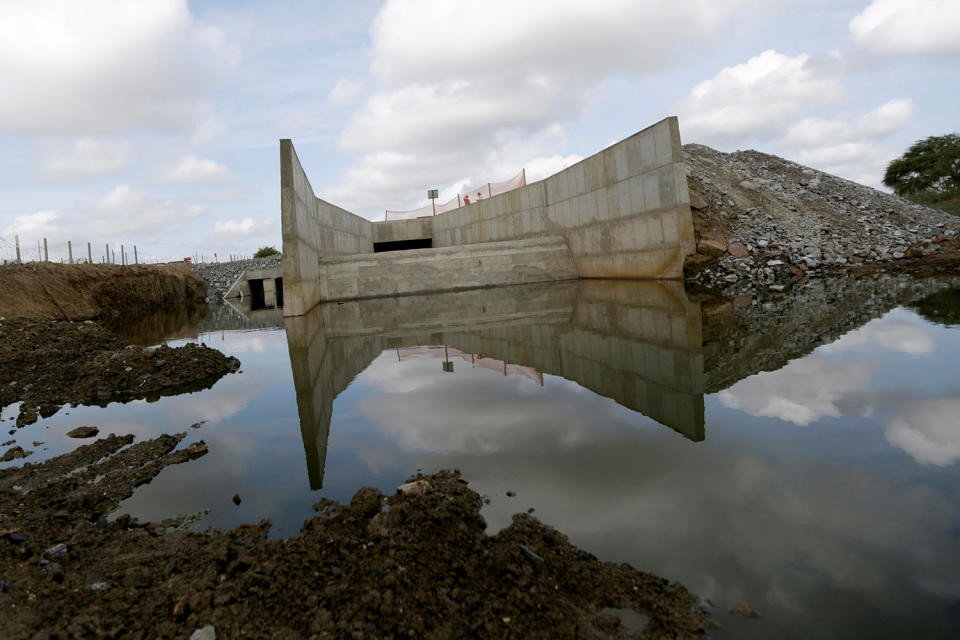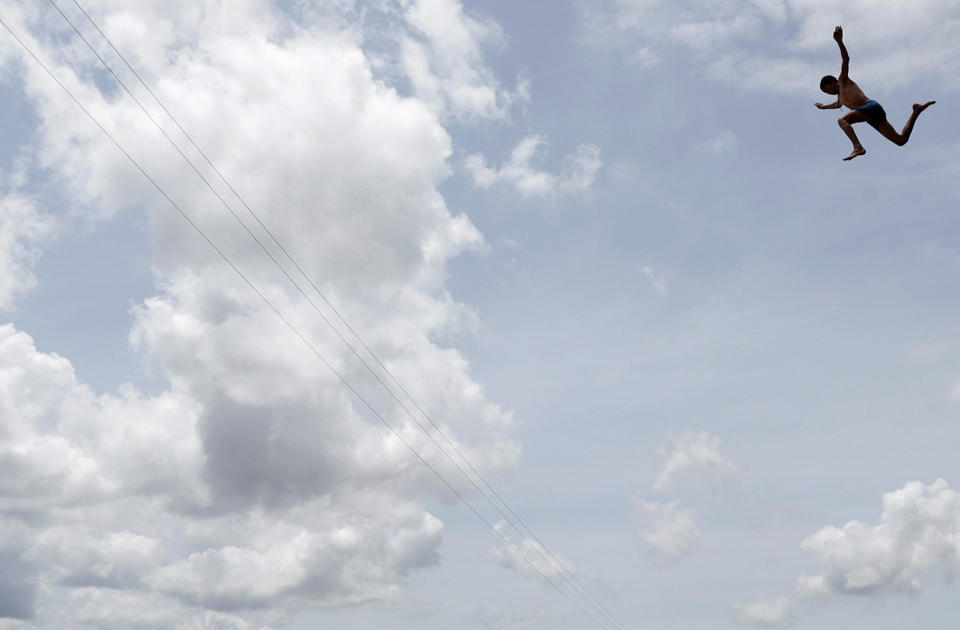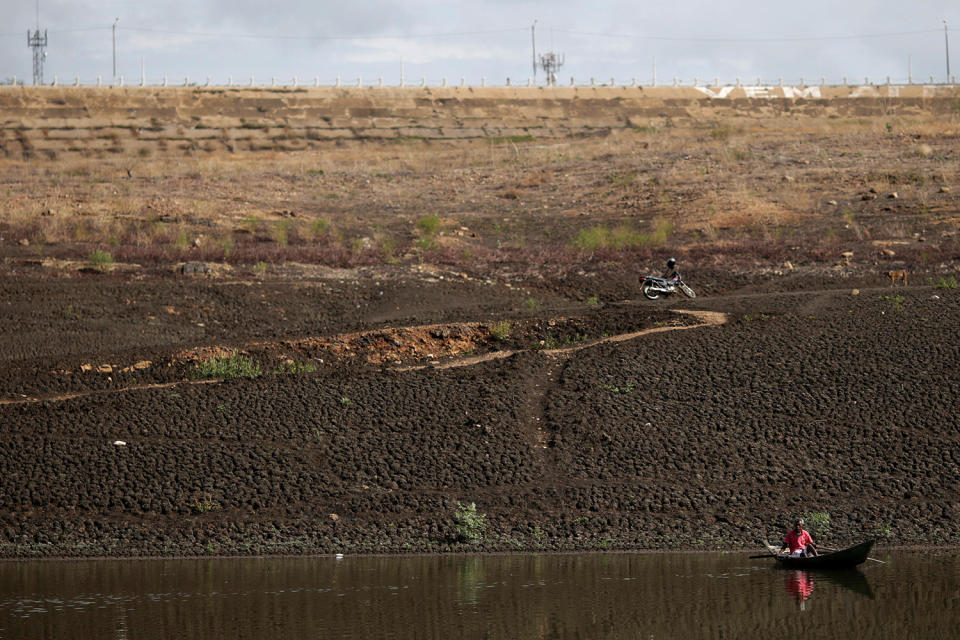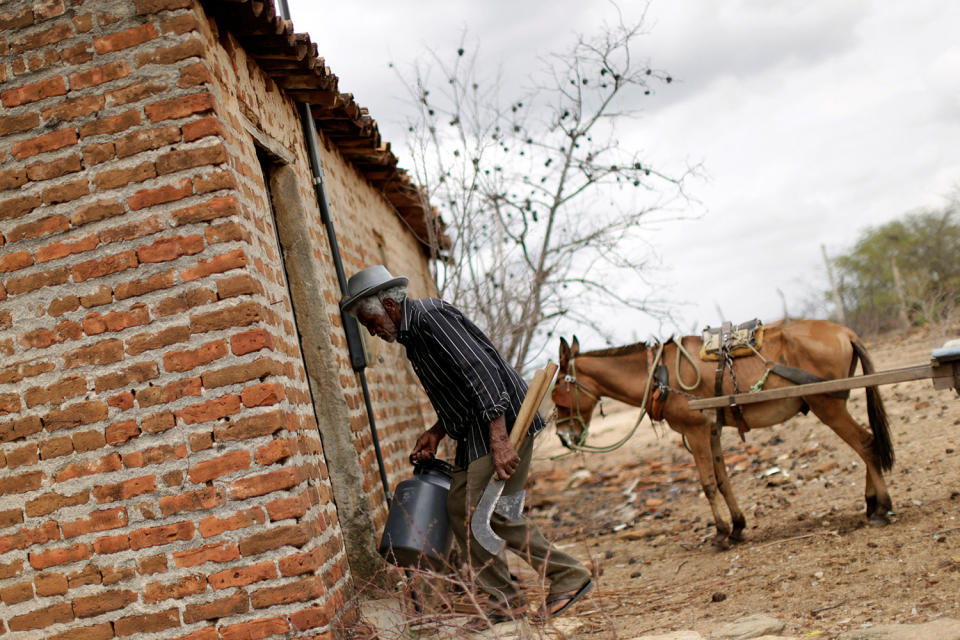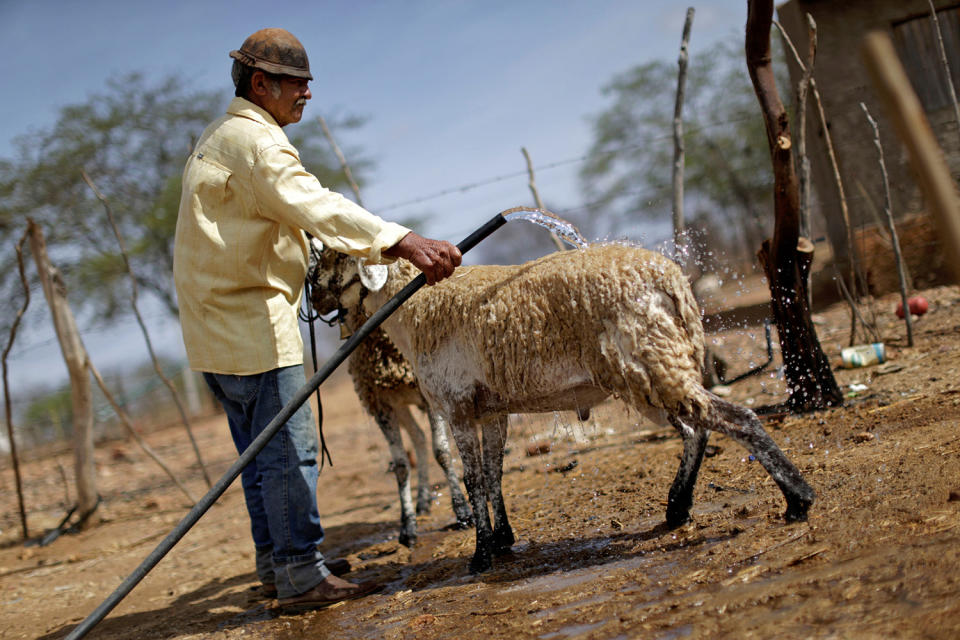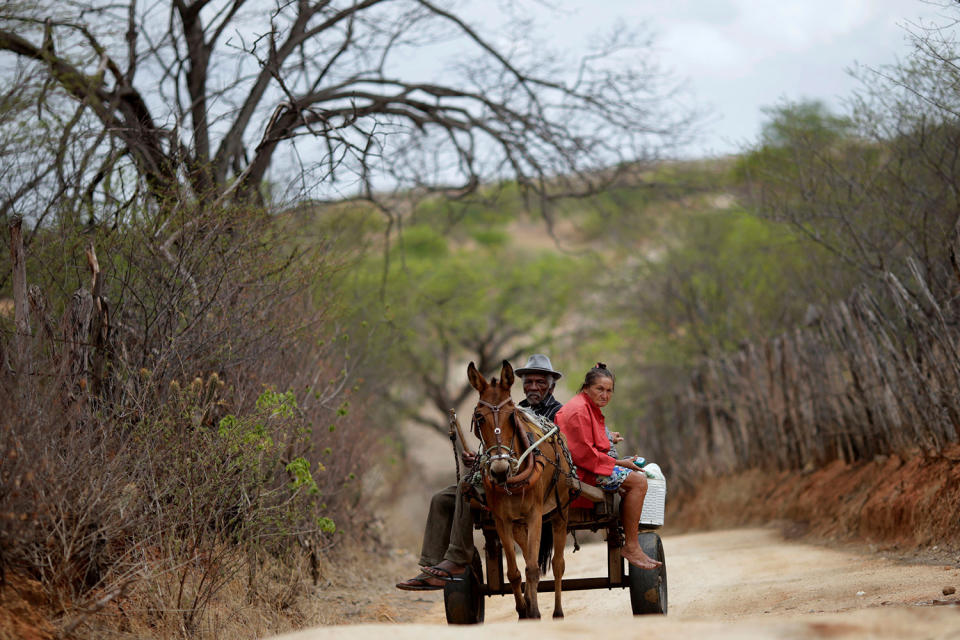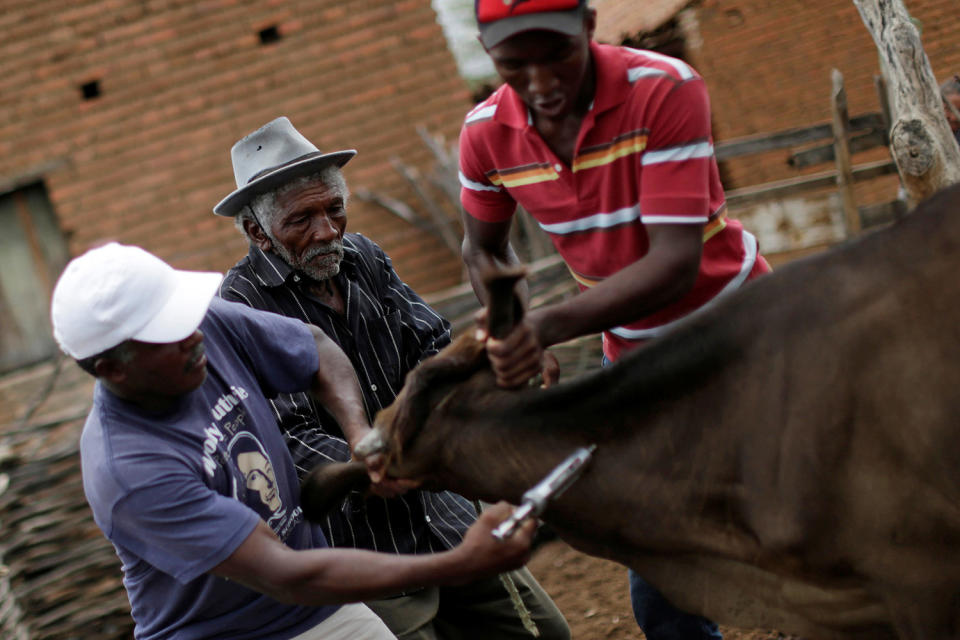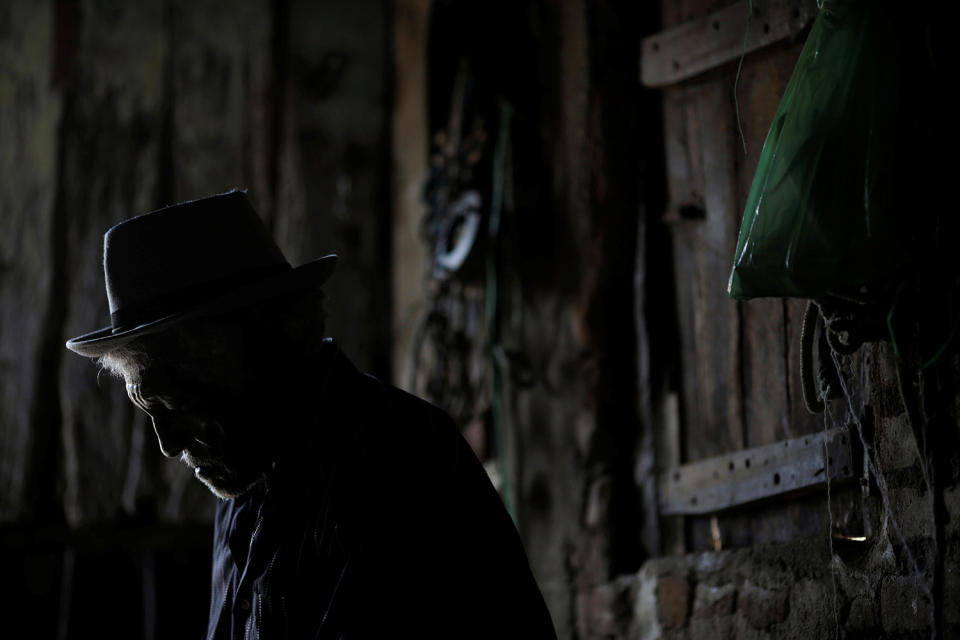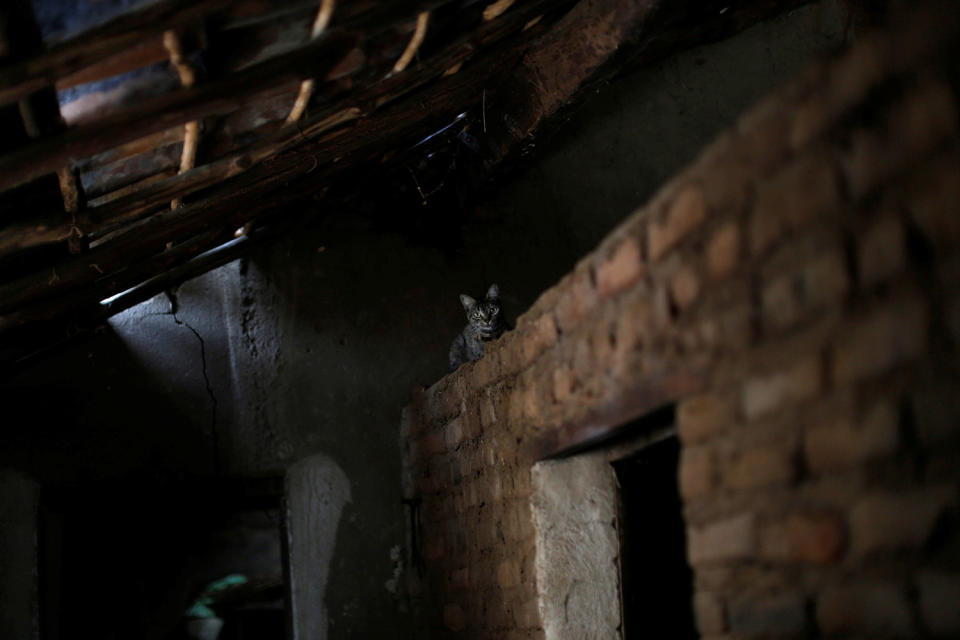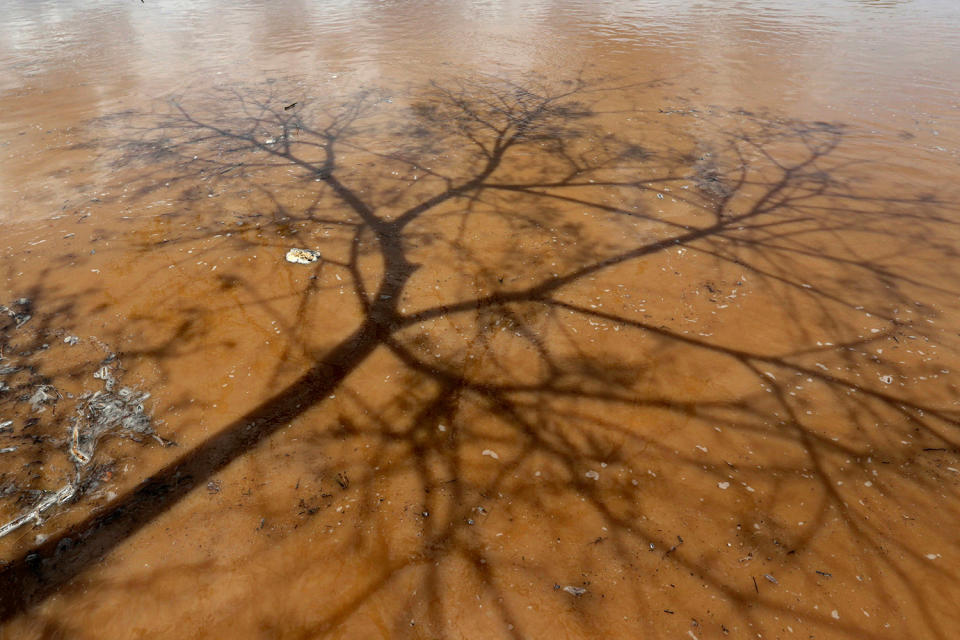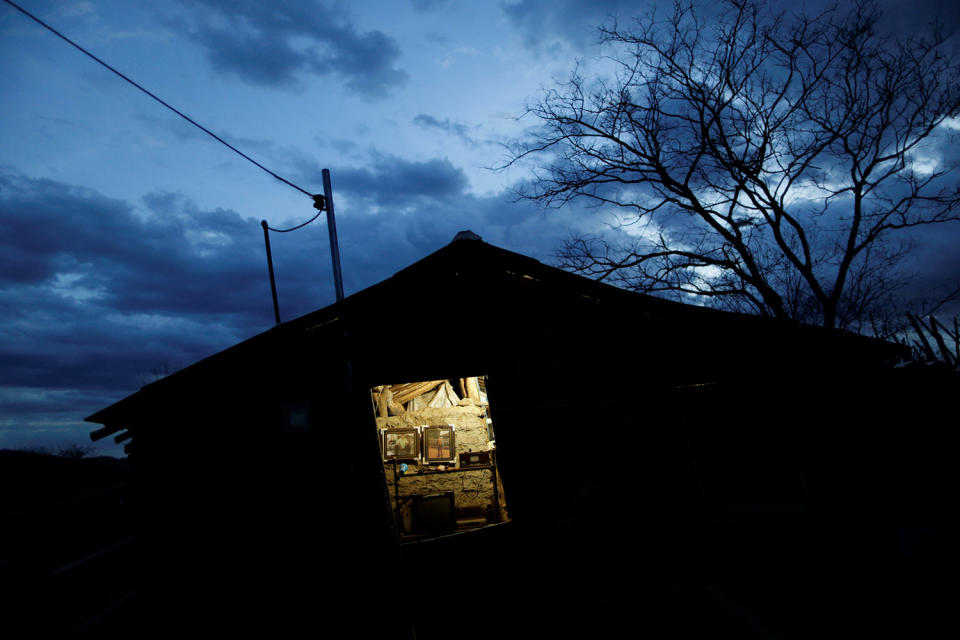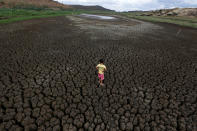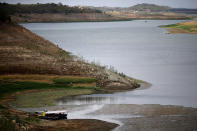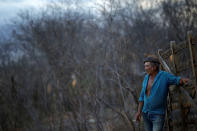Brazil's race to save drought-hit city
The shrunken carcasses of cows lie in scorched fields outside the city of Campina Grande in northeast Brazil, and hungry goats search for food on the cracked-earth floor of the Boqueirao reservoir that serves the desperate town.
After five years of drought, farmer Edivaldo Brito says he cannot remember when the Boqueirão reservoir was last full. But he has never seen it this empty.
“We’ve lost everything: bananas, beans, potatoes,” Brito said. “We have to walk 3 kilometers just to wash clothes.”
Brazil’s arid northeast is weathering its worst drought on record and Campina Grande, which has 400,000 residents that depend on the reservoir, is running out of water.
After two years of rationing, residents complain that water from the reservoir is dirty, smelly and undrinkable. Those who can afford to do so buy bottled water to cook, wash their teeth with, and even to give their pets.
The reservoir is down to 4 percent of capacity and rainfall is expected to be sparse this year.
“If it does not fill up, the city’s water system will collapse by mid-year,” says Janiro Costa Rêgo, an expert on water resources and hydraulics professor at Campina Grande’s federal university. “It would be a holocaust. You would have to evacuate the city.”
Brazil’s government says help is on the way.
After decades of promises and years of delays, the government says the rerouting of Brazil’s longest river, the São Francisco, will soon relieve Campina Grande and desperate farmers in four parched northeastern states.
Water will be pumped over hills and through 400 kilometers of canals into dry river basins in Ceará, Rio Grande do Norte, Pernambuco, and Paraíba, the small state of which Campina Grande is the second-biggest city.
Begun in 2005 by leftist president Luiz Inacio Lula da Silva, the project has been delayed by political squabbles, corruption and cost-overruns of billions of dollars.
Brazil’s ongoing recession, which economists calculate has shrunk the economy of the impoverished northeast by over four percent during each of the past two years, made things even worse.
Now, President Michel Temer is speeding up completion of the project, perhaps his best opportunity to boost support for his unpopular government in a region long-dominated by native-son Lula and his leftist Workers Party.
In early March, Temer plans to open a canal that will feed Campina Grande’s reservoir at the town of Monteiro. The water will still take weeks to flow down the dry bed of the Paraíba river to Boqueirão.
With the quality of water in Campina Grande dropping by the day, it is a race against time. (Reuters)
See more news-related photo galleries and follow us on Yahoo News Photo Tumblr

 Yahoo Sport
Yahoo Sport 







































